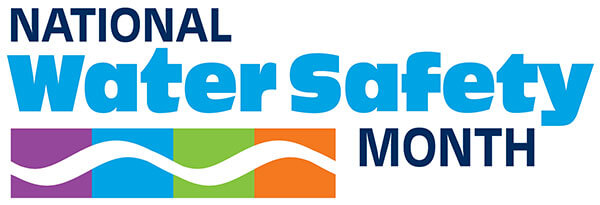FREE Standard Shipping On All Orders $100 or More!*
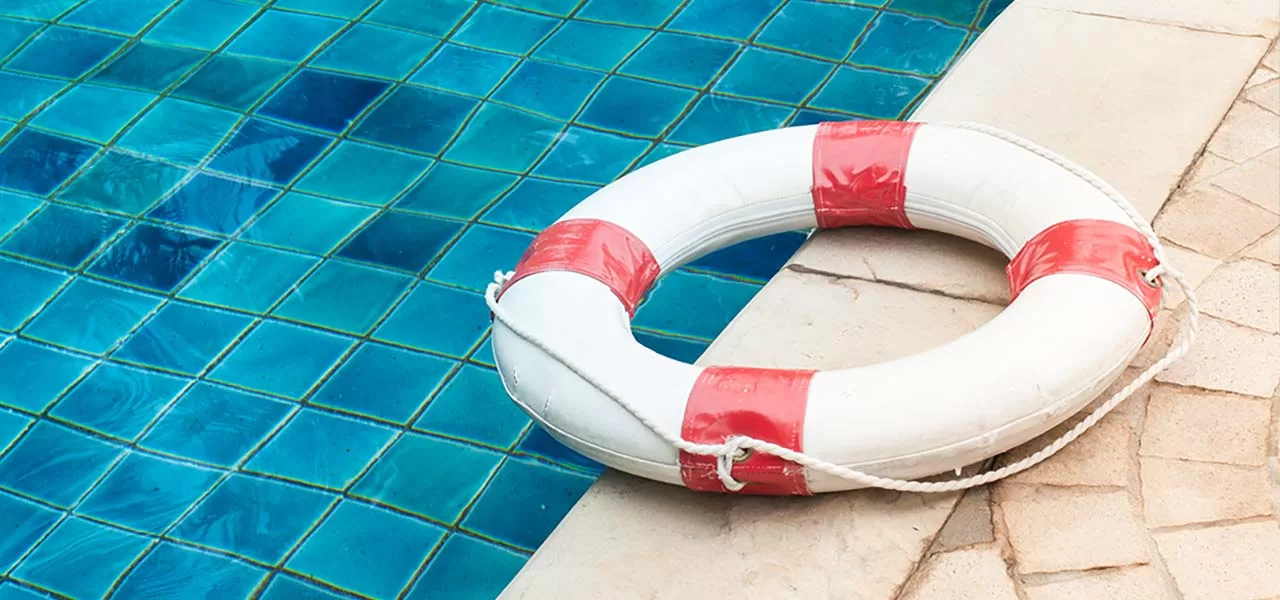
National Water Safety Month
Now that National Pool Opening Day has passed, we flip the calendar to May, which is the start of National Water Safety Month. As most pool owners open their pools this time of year, May is a fitting month for water safety awareness. Spending time in, and around, the pool during the hot summer months is a much desired escape for pool owners and swimmers.
Soaking up the sun on a pool float might be the only thing on your mind this season. However, understanding the importance of pool and water safety is critical. Knowing how to spot signs of danger, and how to prevent it in the first place, will give you the peace of mind you need to have a wonderful swim season. So put on your goggles, grab your snorkels, and let’s dive in!
Safety First: Adult Supervision
As soon as you open your pool for the season, water safety should be your number one priority. The key to preventing swimming pool accidents or death is to have eyes on the pool at all times. Never leave children, pets, or any vulnerable person unsupervised around a pool. Accidents can happen in seconds, and when water is involved, those seconds count.
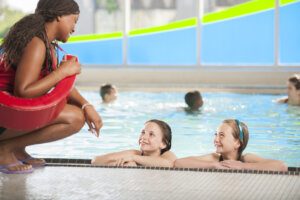
Most swimming pool accidents occur in residential areas, due to a lack of supervision. Commercial swimming pools statistically have fewer pool accidents due to one simple thing - lifeguards. Always designate a responsible adult to keep an eye on the pool when it is in use. Especially when children are present. If you notice a child is missing from your house or yard, always check the pool area first.
EXPERT TIP: When watching your pool, follow the 10:20 rule that lifeguards use. It should take you less than 10 seconds to thoroughly scan your pool, and less than 20 seconds to reach anyone who may need help.
Pool Safety Fences and Equipment
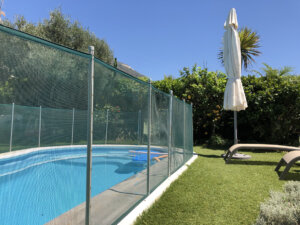
If you have a backyard at your house, chances are there is a fence around it. This is the first layer of protection from people getting into your pool by accident. If you have an inground pool in your yard, add a safety pool fence around the pool’s perimeter to keep the pool off-limits until you are ready to safely use it. Many safety fences are removable, which gives the pool owner flexibility and the option to take the fence down if they need to.
For above ground pools, install a locking safety ladder. Above ground pool ladder systems range in prices and features, from basic locking ladders to secure pool entry systems with a self-closing locking gate. Most above ground pools already come with a standard ladder. However, investing in a high-quality, locking safety ladder is strongly recommended.
As a final layer of protection, there are a variety of pool alarms that can be installed in and around your pool. These alarms act as a second set of eyes, notifying you if someone has opened a pool gate or entered the water. Safety Turtle is an alarm system designed for kids and pets. It is a lightweight wristband for children, or a collar for pets, that will alert you immediately if it is submerged in water.
Swimming Lessons
This might seem slightly obvious, but being able to swim is a crucial skill to have as a pool owner. Anyone who doesn’t know how to swim is inherently at risk when they are around pools. Having a proper swimming education will not only give you the tools and knowledge to keep yourself safe, you will gain more insight into keeping anyone using your pool safe.

Teaching children how to swim is equally as important as teaching adults, if not more so. Young children often don’t realize the potential dangers associated with being around water. Developing a child’s understanding of water safety and helping them become strong swimmers are essential skills they will carry with them their whole life. Not to mention it is a great form of exercise, and just plain fun!
Kids as young as one can begin swimming lessons. Getting children in the water early teaches them basic safety techniques, like floating, blowing bubbles, and grabbing onto the pool wall. It also builds their comfort and confidence in the water. This confidence will help keep them from becoming distressed if they accidentally fall in.
Check out your local parks and recreation aquatic programs or YMCA to find adult and child swim lessons near you!
How to Spot and Handle an Emergency
Actively monitoring the people in your pool is the first line of defense against pool accidents. However, there is always the chance of something going wrong, no matter how vigilant you are. Being able to spot the signs of someone struggling in the water and knowing how to act accordingly can save someone’s life.
1. Signs of Distress
A swimmer in distress generally does not look like what you have seen on TV. Very rarely do they thrash around and call out for help. Instead, it is typically a very subtle, quiet situation, especially with children. A few warning signs of someone in distress are:
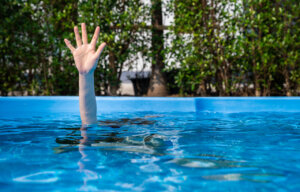
- Bobbing: This is a common sign to look for in children. They will bob up and down, trying to find the bottom of the pool to stand on.
- Head tilting: A person with their head tilted far back in the water is struggling to keep their airway above the water.
- Reaching out: A person struggling in the water will try to grab onto anything they can that will help them stay afloat.
- Floating face down: A person floating face down in the water does not immediately mean they are struggling. But it is important to keep an eye on that person until it is clear they can lift their heads and breathe normally.
- Hyperventilating: A classic sign of active drowning is hyperventilating or coughing due to a lack of oxygen and/or water entering the airways.
2. CPR and First Aid
We hope you never find yourself in a situation where you need to perform CPR (cardiopulmonary resuscitation). But if you do, being able to do so effectively can save a life. There are numerous organizations that offer CPR training for individuals and groups. Yearly refresher courses are required to keep your certification up to date. We also recommend having a stocked first aid kit by your pool area. You never know when a little swimmer may need a band-aid.
3. “Reach or Throw, Don’t Go”
If you see a swimmer struggling in the water, your first instinct might be to jump in and help them. But unfortunately, doing so can put you in serious harm’s way, as well. Especially if the person struggling is the same size or larger than you are. When a swimmer is in distress in the water, they go into fight or flight mode. Meaning their brain says to do whatever it takes to stay afloat and get to safety. Their first instinct is to grab onto anything that will keep their head above water. Which might be you if you go into the water to rescue them.
As hard as it might be, the safest way to rescue someone in the water is to not get in the water with them. Instead, throw them a flotation device, such as a life jacket, a pool float, or anything that they can use to keep themselves afloat. If you don’t have a flotation device around, find a long rope or garden hose for them to grab onto. It’s important to note that “Reach or Throw, Don’t Go” generally applies to rescuing those who can physically overpower you in the water. If you are a strong, adult swimmer, entering the pool to rescue a struggling child is strongly encouraged.
EXPERT TIP: Always keep a phone near the pool in case of emergencies. Situations can take a turn for the worst in a matter of seconds. Being able to quickly call 911 can make all the difference.
Understanding water safety is a key part of having a fun, successful pool season. The more proactive you are, the safer your pool will be! Check out the National Water Safety Month website for more information.
